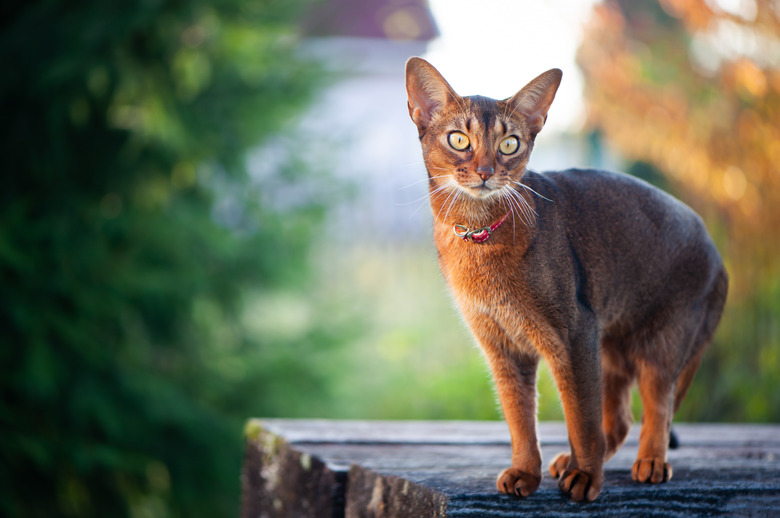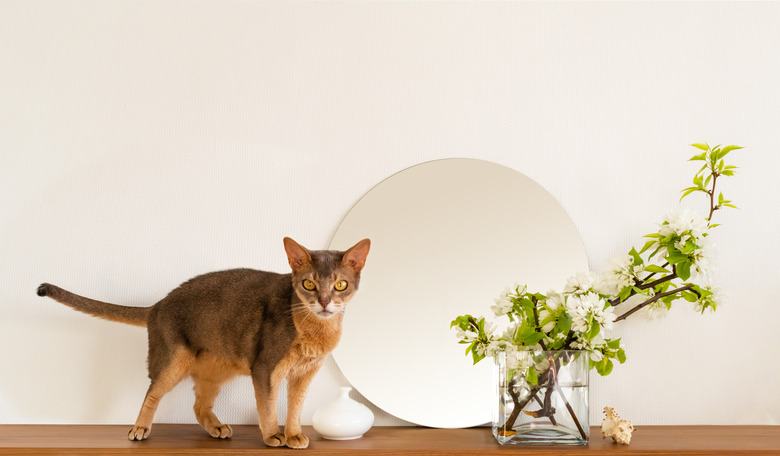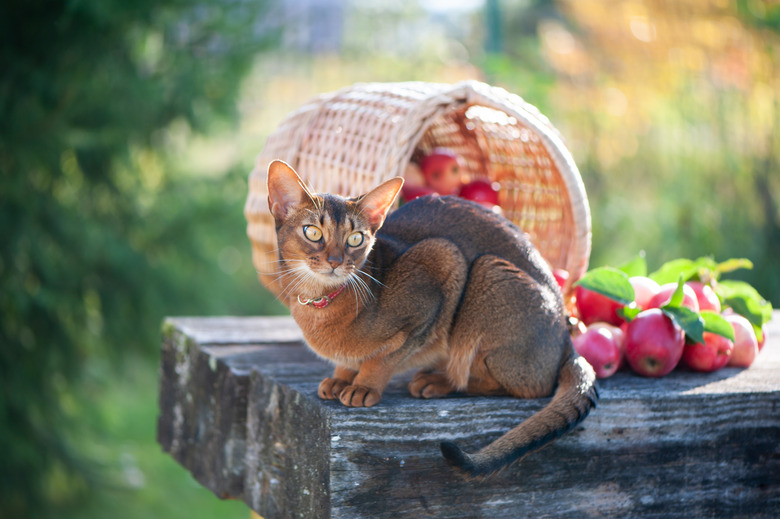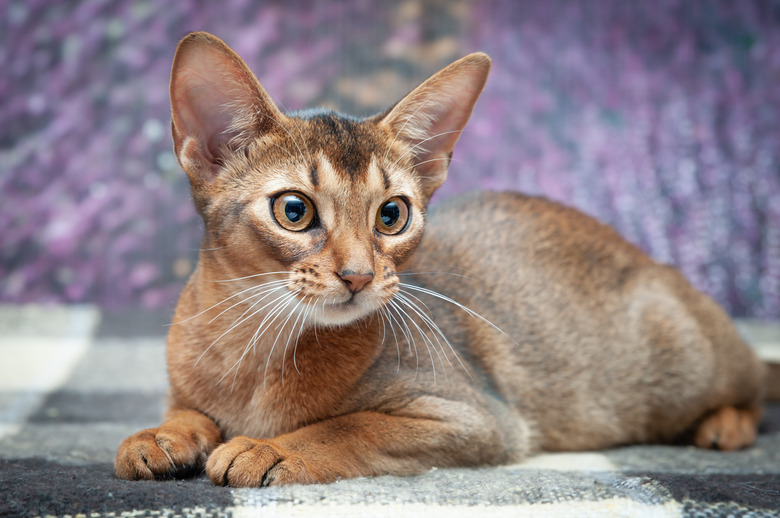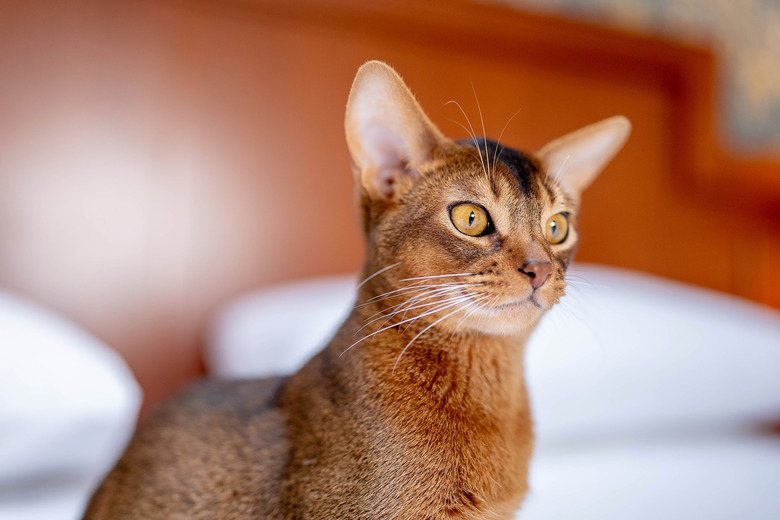9 Fascinating Facts About Abyssinian Cats
Abyssinians are one of the most recognizable cat breeds, even if they are not among the most common house cats that you typically see. They have a distinctive shorthair coat, tall pointy ears, and a lean body that is muscular and elegant. Here are 9 interesting cat facts about the Abyssinian.
1. Abyssinian means Ethiopian.
1. Abyssinian means Ethiopian.
Abyssinia is an early name for what we now call the country of Ethiopia in Africa. World History Encyclopedia describes the ancient Abyssinian culture as lasting from the 13th to the 20th century of the Christian Era. The kings of Abyssinia claimed to have been descended from the Bible's King Solomon. They established themselves in part by trade with Egypt, southern Arabia, and other cultures in Africa. This connection to Egypt may have played a part in the origin of the Abyssinian cat breed, but it isn't clear.
2. The Abyssinian origin is unknown.
2. The Abyssinian origin is unknown.
The origin of the Abyssinian is unclear, but it is one of the oldest known cat breeds. The American Cat Fanciers' Association (ACFA) says the first recorded example of the Abyssinian was in England in 1871. When breeders began creating more Abyssinians, they listed 12 cats, most with one unknown parent, between 1900-1905. A possible way that Abyssinians might have been brought to England from Ethiopia (Abyssinia) is by sailors in 1868.
The first record of one of these cats, named Zulu, was mentioned in a book published in 1874, which simply says that she was brought from Ethiopia. The ACFA also says it is possible the breed was developed in England from tabby cats. Genetic studies indicate that the cat may have its origins in the coast of the Indian Ocean and Southeast Asia.
3. The Abyssinian is a tabby.
3. The Abyssinian is a tabby.
The site Feline Genetics says that all domesticated cats are tabbies, and that it was actually a mutation when some cats appeared without markings on their coats. The ACFA suggests that the Abyssinian cat was brought to England from Ethiopia, and then exhibited at cat shows along with domesticated cats and wild cats. Perhaps the Abyssinian came about due to a tabby being crossed with an African wild cat. Some experts say the Abyssinian looks a lot like the Southern African wildcat, felis lybica cafra.
4. The Abyssinian is "ticked."
4. The Abyssinian is "ticked."
No, that does not mean the Abyssinian is permanently upset! Rather, a "ticked" cat has a distinctive coat caused by a gene known as the agouti gene. Base Paws explains that cat genetics result in four tabby patterns: mackerel (narrow stripes), classic (swirls), spotted, and ticked, meaning they have no stripes, but rather bands of color.
5. The tip of their tail should be dark.
5. The tip of their tail should be dark.
The Cat Fanciers' Association (CFA) describes in the breed standard of the Abyssinian that their coat color is "warm and glowing." Their ticking should be noticeable and the tip of their tail should be dark. A fully ticked cat will have darker shading along its spine. A true Abyssinian cat has dark lines extending from its eyes and brows, and its eyes should be either gold or green. An Abyssinian is a shorthair cat, and any black on a red-furred "Aby" disqualifies it from the breed.
6. Abyssinians are highly intelligent.
6. Abyssinians are highly intelligent.
They are known to be cats that are loyal and like to be around humans, but not necessarily as a lap cat. They can be trained and are good candidates for clicker training. They may also be the type of cat who can do tricks. This type of cat may be easily bored. They are also likely to perch in high places. They may even be able to use their paws to open cabinet doors and turn on light switches.
7. The earliest known Abyssinian is taxidermied.
7. The earliest known Abyssinian is taxidermied.
A taxidermied cat in the Leiden Zoological Museum in Holland is the earliest identifiable Aby cat. It was purchased around 1834-1836 from a supplier of wild cats and labeled by the museum founder as "Patrie, domestica India," according to the CFA.
8. Abyssinians could be mummified.
8. Abyssinians could be mummified.
Ancient Egyptian society held cats in high regard as sacred animals that were closely associated with the cat goddess Bast or Bastet. Cats were also kept as pets, and they held such an important part of society that they were sometimes mummified and buried with their owners so they could be together in the afterlife, explains the Carnegie Museum of Natural History. Mummified cats in ancient Egyptian tombs look a lot like today's Abyssinians.
9. Abyssinians retain their playful personality.
9. Abyssinians retain their playful personality.
Many cats slow down as they age, but the Abyssinian is one cat that is known to retain their playful personality throughout their lifespan. It is common for the Abyssinian to live up to 15 years.
References
- World History Encyclopedia: Kingdom of Abyssinia
- American Cat Fanciers' Association: Abyssinian Breed Synopsis
- Feline Genetics: D. Agouti in Cats (Classic / Mackerel Tabby, Ticked Tabby, Spotted Modifiers)
- Base Paws: Cat Coat Genetics
- Cat Fanciers' Association: Abyssinian
- VCA Hospitals: Abyssinian
- Carnegie Museum of Natural History: Why Were Cats Mummified in Ancient Egypt?
- Forbes: Cats In Ancient Egypt Didn't Look The Way You Think
- Pet Plan: Abyssinian Personality, Temperament, Lifespan, Grooming, and Health Advice
